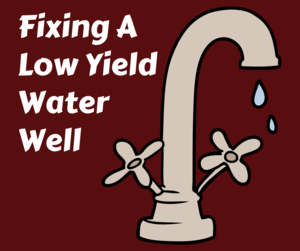CALL TODAY 1-800-441-6281
CALL TODAY 1-800-441-6281

Do Geothermal Wells and Ground Source Heat Pumps Use a Lot of Water
- Tags:
- geothermal wells
Say Hello To Your New Heating System. Its safe, its green and it's inexpensive to operate.
A geothermal exchange system uses the earth’s natural, relatively constant thermal temperature to heat, cool and provide hot water for a home or business. The ground heat exchanger transfers warmth from the earth into the home during the winter, and cooling energy in the summer through a series of pipes buried in the ground. The heat pump connects the underground portion to the inside of the building and through the ductwork or radiator that transfers the warm air throughout the home.
Skillings & Sons, LLC has more than 40 years of experience drilling wells in New England and is experienced in drilling geothermal wells. We’ve invested in high-quality equipment capable of breaking through the bedrock to make the most of the earth’s natural energy and our technicians are IGSHPA certified. We work with heat pump technicians to drill the well and install the portion of the system located outside the home.
Because many geothermal systems located in the Northeast are dug into bedrock and the aquifers within, we often get asked how much water these systems use. Regardless of the type of system, water usage is minimal to none.
There are two types of geothermal well systems, standing column and closed vertical loop. A standing column well system is common in areas where the bedrock is near the earth surface and is used in about 80 percent of the geothermal wells in the Northeast. To install a standing column well, deep holes are drilled into the aquifer and pipes are dropped into the holes until they meet the water. The system pulls the water from an aquifer into the piping and into the heat exchange pump to transfer heat from the ground into the home. This system consumes no water; all water used is returned back into the ground.
A closed vertical loop acts in much the same way, except the pipes are sealed and a special anti-freeze fluid is circulated inside, moving the heat from under the earth’s surface into the home. This system requires drilling deep, narrow holes underground, but it consumes no water; the fluid in the closed loop does not interact with the soil or water within the ground.
Geothermal systems are very efficient and use few natural resources. They do use a small amount of electricity to run the heat pump within the home and to circulate the water outside the home. Beyond that, there is no fuel used to power the system, saving property owners thousands a year in heating oil and natural gas costs.
Geothermal systems can also heat the home’s hot water and provide cool air in the summer. Because the earth’s temperature remains constant throughout the year, transferring warm air out of the home and air cooled by the earth into the building has an air-conditioning effect during the summer months.
If you are considering installing a geothermal heating system in your home, or in a commercial or educational building, please contact a Skillings & Sons representative today. Your home or building may qualify for clean energy subsidies.

